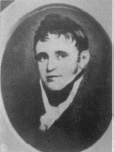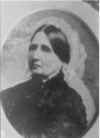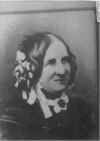 Captain
John Foxton R.N. was born
about 1777, the son of Dr. John Foxton and Mary Palmer of Newport,
Shropshire, England. He entered the Navy at an early age, at about 12 years old. Captain
John Foxton R.N. was born
about 1777, the son of Dr. John Foxton and Mary Palmer of Newport,
Shropshire, England. He entered the Navy at an early age, at about 12 years old.
At the time of
the Battle of the Nile in 1798, he was a Lieutenant serving on HMS "Minotaur",
and was severely wounded in the battle. The "Minotaur"
engaged the French ships from which Nelsonís flagship "Vanguard"
was receiving severe damage. Nelson was wounded in the head at this stage
of the battle, and thought he was dying. Foxton was
awarded a gratuity of 50 pounds from a fund for the Nile wounded,
and received four engravings of the battle and decanters. (The
engravings are still in possession by the Foxton family.)
John Foxton was a
Captain of the Royal Navy by time he was 25. He was made a
Master on 9 June 1800.
He served on several vessels, including
- Cameleon - June 1800 - December 1804 - harbour
service
- Triumph - October 1803 - December 1804 - a 74
gun ship
- London - October 1805 - December 1805 - a 90 gun ship
- Indefatigable - a 64 gun ship
- William - September 1807 - ? - a storeship, ran
aground in strong gales in November 1807 in the Gut of Canso.
- Hyaena - September 1810 - 30-gun frigate
- Hyaena - September 1815 - 38-gun troopship - ran
aground at the Cape of Good Hope in July 1816 - Foxton officially
censored for ship being under-manned.
He saw service
in numerous other actions, notably Cadiz and Calvi, and was wounded again
on several occasions. He was not present at the Battle of Trafalgar
as the ship he then commanded, the frigate
"Hyaena", had
taken a French ship prize just before the battle, and was escorting this
and other prizes to England. In the letter mentioning the award of
gratuity, we know that he was a Captain of the Royal Navy by the time he
was 25. frigate
"Hyaena", had
taken a French ship prize just before the battle, and was escorting this
and other prizes to England. In the letter mentioning the award of
gratuity, we know that he was a Captain of the Royal Navy by the time he
was 25.
In 1810,
following the capture of the West Indies from the French, the "Hyaena"
embarked a portion of the Staff of the Commander in Chief of North America
(Sir George Provost) for transport to Canada. Among those on this passage was Surgeon-General
Fox, the Senior medical officer of North America and this family.
His
daughter Wilhelmina Fox (above right) and Captain Foxton were married in Halifax Nova Scotia
in 1810. Their son John Greenlaw Foxton was born at sea in 1811,
christened at Port Royal and his birth registered at Dentford, the royal
dockyard in the Parish of Stepney. His sister Anne (right) was born in 1812.

In 1816, he
was Master of the Hyaena, a troopship at the time.
Following the
surrender of Napoleon to Captain Maitland on HMS "Bellerephon",
peace came
to Europe. Napoleon was taken to St. Helena aboard
Sir George Cockburn's ship, the HMS "Northumberland", and
the "Hyaena" under Captain Foxton, formed the escort.
This was to have been his last voyage before becoming a
Superintendent of the Naval Docks, a position which carried a large
salary; but he was accidentally killed at St. Helena when a spar carried
away. He was buried on the island of St. Helena.

According to an extract
of a letter written by his son, John Greenlaw Foxton, possibly to his daughter, Edith
Marley in Stanthorpe, Queensland, Captain Foxton...........
was captain of the "Hyaena" in 1809, with the
Fox family on board, sailing to Halifax, Nova Scotia, where Surgeon-Major
Fox was to take up an appointment with Sir George Provost,
Commander-in-Chief of forces of North America. John Foxton and Wilhelmina Fox (daughter of Surgeon-Major Fox) were married at Halifax in 1810. He
was badly wounded at the Battle of the Nile, and missed Trafalgar being
sent to Gibraltar with a prize taken shortly before the French Fleet hove
in sight. He was at Cadiz and Calvi with Admiral Nelson and was slightly
wounded. The "Hyaena" accompanied Sir George Cockburn's ship the
"Northumberland" and Napoleon to St. Helena Island. He was
killed at St. Helena on board the "Hyaena" when a spar gave way.
He is buried on St. Helena Island.

The Hyaena - 60 years later
Interestingly, the "Hyaena"
was the frigate that escorted the "First Fleet" of ships and
convicts out of the English Channel en route to Australia in 1877.

|

![]()
![]()
![]() Bell-Armstrong
Connections Home
Bell-Armstrong
Connections Home